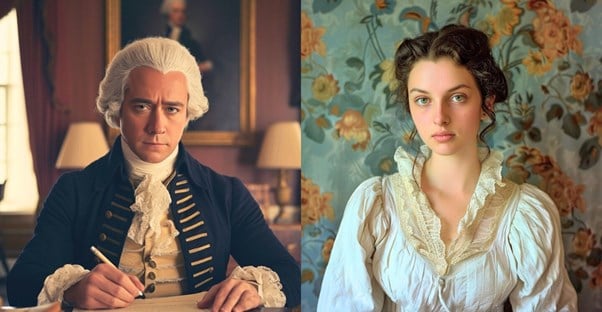Alexander Hamilton
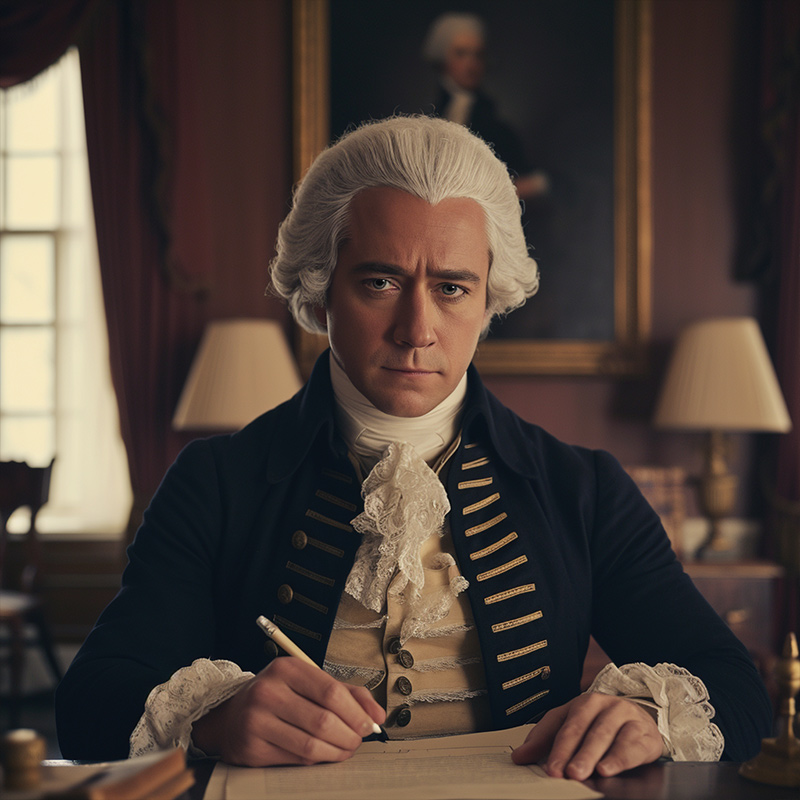
Probably best known at this point for the musical about him, Alexander Hamilton was a revolutionary and statesman who clearly knew how to get on people’s nerves as he ended up getting shot and killed in a duel with Aaron Burr. That’s the legacy he left behind, but if you’ve seen the musical or read about him, you know there’s a whole lot more to him than that.
For instance, Hamilton was the first secretary of the treasury, he was an elected representative for the Congress of the Confederation, and one of George Washington’s most trusted cabinet members. Hamilton has had numerous portraits depicting him and none of them look exactly the same, here AI takes a shot to help build a more realistic visage.
Elizabeth Schuyler Hamilton

Elizabeth Schuyler Hamilton, AKA Eliza, was much more than just Alexander Hamilton's wife — she was a remarkable early feminist. Eliza was born into a prominent New York family and was well-educated, which was unusual for women of her time. The pair met during the Revolutionary War and they married in 1780. In 1797, Hamilton publicly admitted to an affair with Maria Reynolds to defend himself against accusations of financial impropriety.
Despite the humiliation of Hamilton's cheating scandal, Eliza dedicated herself to philanthropy and advocacy, founding the first private orphanage in New York City and actively supporting numerous charitable causes throughout her life. She also played a vital role in preserving her husband's legacy after his tragic death in a duel with Aaron Burr.
James Monroe
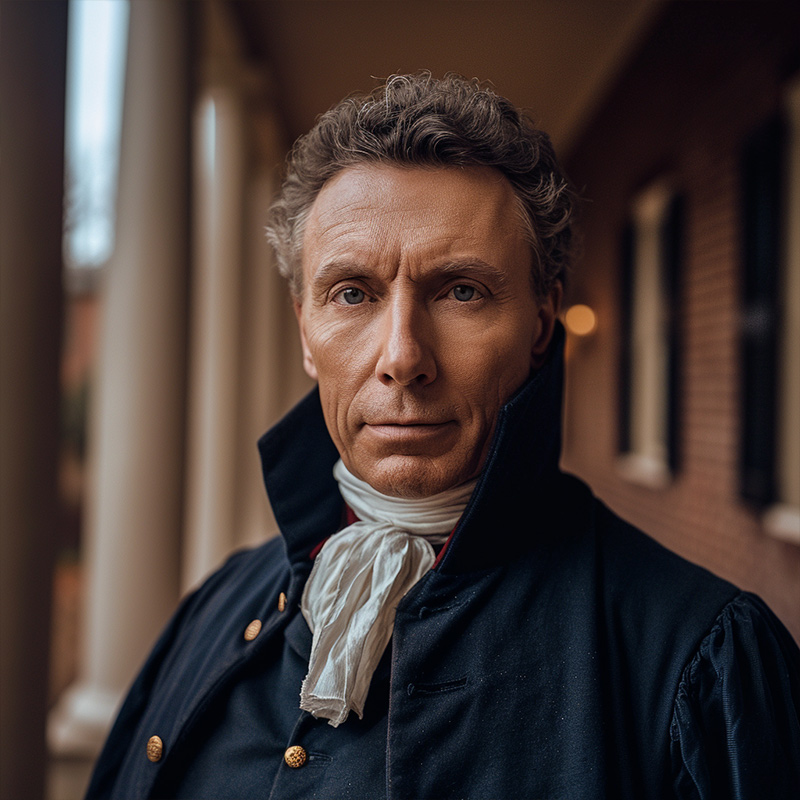
The fifth president of the United States, James Monroe, was a statesman, lawyer, and diplomat. He’s perhaps best known for the Monroe Doctrine, a policy opposing European colonialism and asserting U.S. dominance. He held multiple titles throughout his career, as he was a man of many talents.
Though he was born into a slave-owning family, he supported the colonization of Africa by freed slaves—Liberia’s capital Monrovia is named in his honor. With just a few portraits of this historical figure, it can be hard to imagine what he really looked like. This AI image helps solidify the details.
Elizabeth Monroe
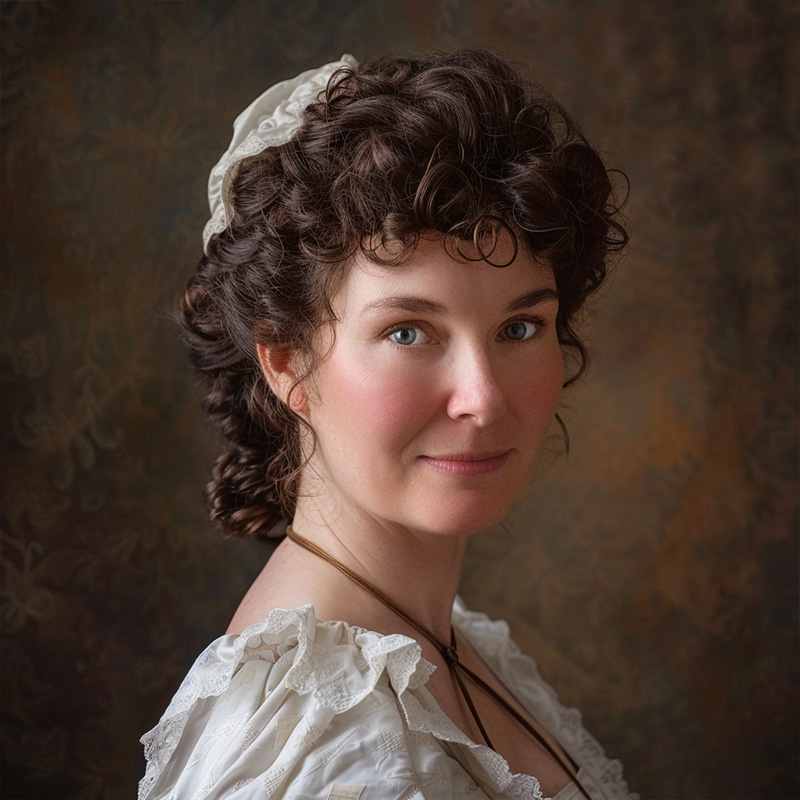
Elizabeth Monroe, wife of the 5th president, James Monroe, was a complex figure. Despite marrying into wealth, her family's fortunes dwindled during the Revolution. Beautiful and elegant, she charmed European crowds while James served as a diplomat. However, shyness and health issues limited her public appearances as First Lady.
Though reserved, Elizabeth was a devoted wife, managing the household and supporting James' political career. Her quiet strength and unwavering support were undeniable, even if public perception of her was mixed – some saw aloofness, others kindness. Delving into letters and diaries of the era might offer a clearer picture of this intriguing woman.
George Washington
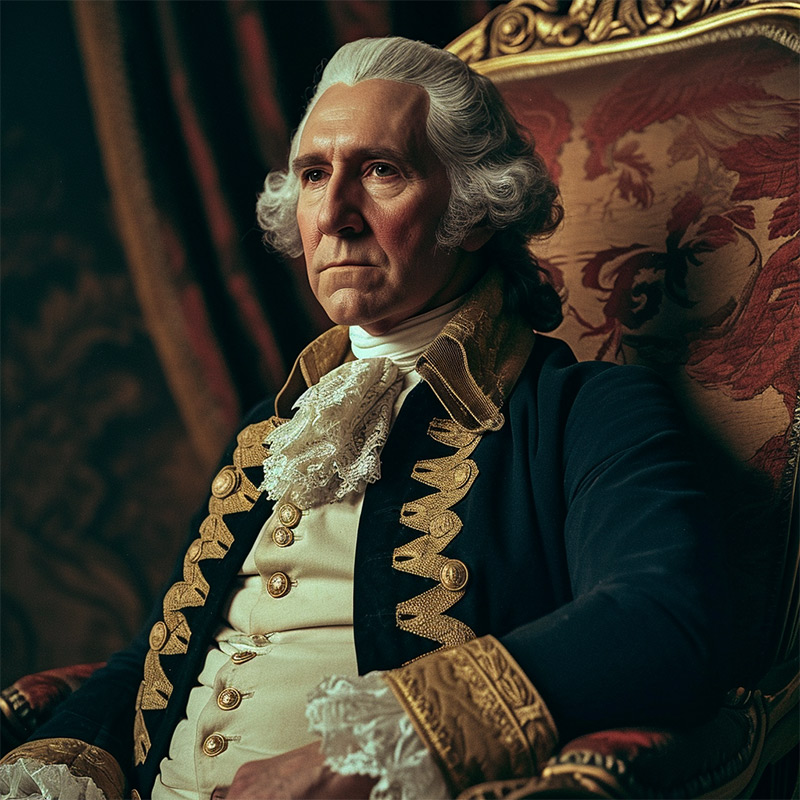
We all know George Washington – the commander of the Continental Army during the American Revolution and the first President of the United States after the Constitutional Convention of 1787. But what we really don’t know is just what the father of our country really looked like.
All we have really had to go by for years are some old paintings and one dollar bills. His profile is certainly recognizable but it’s hard to grasp the finer details of his face and really see him as a living breathing individual. This AI model gives us a pretty good idea of what the man would have looked like in real life.
Martha Washington

Though not a Founding Father, behind every great man is a strong woman! The wife of George Washington, Martha Washington was the inaugural first lady of the US. Also known as Lady Washington, she played a large role in the American Revolution. Martha even followed her husband to his winter encampments for eight years, keeping up morale among the officers.
Surprisingly, Martha was not fully supportive of George becoming the first President. She didn’t enjoy the restrictions placed on her life by assuming the title of the first lady. Seen in paintings, postage stamps, the $1 Silver Certificate, and coins, we have an indication of how she might have appeared. This AI image gives us a clearer view of the historical woman.
Samuel Adams

Samuel Adams isn’t just something you enjoy at Octoberfest—he was a statesman, philosopher, and leader in the American Revolution. He shaped the political culture of the US by designing many of the principles of American republicanism. He became a part of a movement to oppose British efforts to tax the colonies without their consent, which led to the Boston Tea Party.
He’s also known to be somewhat controversial. He was praised in the 19th century as leading colonists towards independence early on, but British historians painted him as someone who provoked “mob violence”. While we’ve seen his likeness in paintings and beer cans, this AI image provides more detail and perhaps a more accurate version of this founding father.
Elizabeth Checkley

Despite being the wife of a Founding Father, Elizabeth Checkley's life remains largely in the shadows. Daughter of a prominent Boston minister, she married Samuel Adams in 1749. Their union, though short-lived, produced six children, but only two survived to adulthood. Elizabeth tragically died in 1757 from childbirth complications.
As the daughter of a clergyman, Checkley was quite educated for a woman at that time. She focused many of her efforts on building a family; unfortunately, only two of their six children would survive to adulthood.
Elizabeth "Betsy" Wells
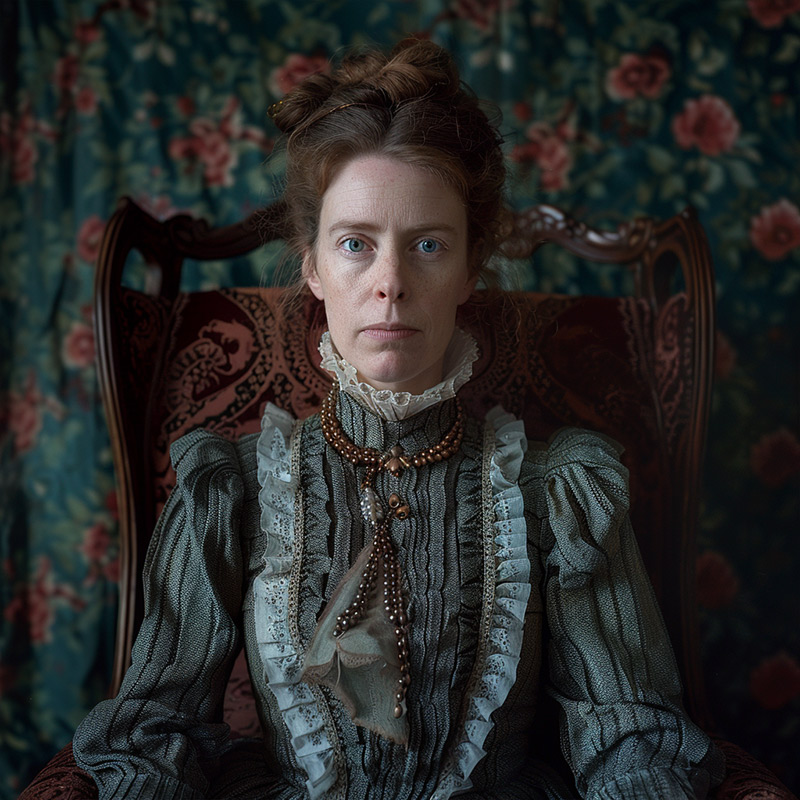
Samuel Adams wasn't alone for long! After his first wife passed away, he married Elizabeth Wells in 1764. Elizabeth's dad was a big-shot merchant in Boston, and she became known as Betsy to avoid confusion with Samuel's first wife. They never had any kids together, but Betsy was a kind and loving stepmother to Hannah and Samuel Jr., the kids from Samuel's first marriage.
Even though she wasn't out there giving speeches, Betsy played a big part by hosting important political gatherings at their place. Imagine all the whispering about revolution over fancy dinners! Having a strong, supportive wife like Betsy must have been a huge help for Samuel, especially during those crazy revolutionary times.
Thomas Jefferson
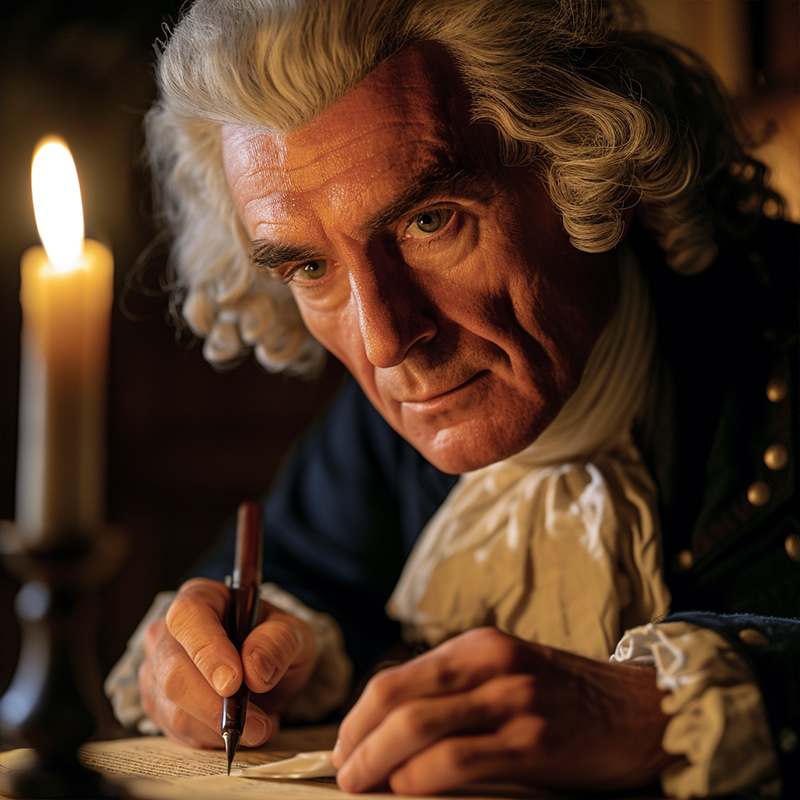
Probably one of the most respected and most controversial of all the founding fathers would have to be Thomas Jefferson. The man was integral to the American Revolution in many ways. He was the author of the Declaration of Independence and served as a statesman and diplomat. Of course, he was also the third president of the United States. He was also a lawyer, philosopher and architect – a man of many talents.
And then there’s the dark side of his legacy. The man was a plantation owner, having owned more than 600 slaves during the course of his life. And he even had relations with at least one of them, but given the fact that Sally Hemings was enslaved, you could hardly say it was consensual.
Martha Jefferson
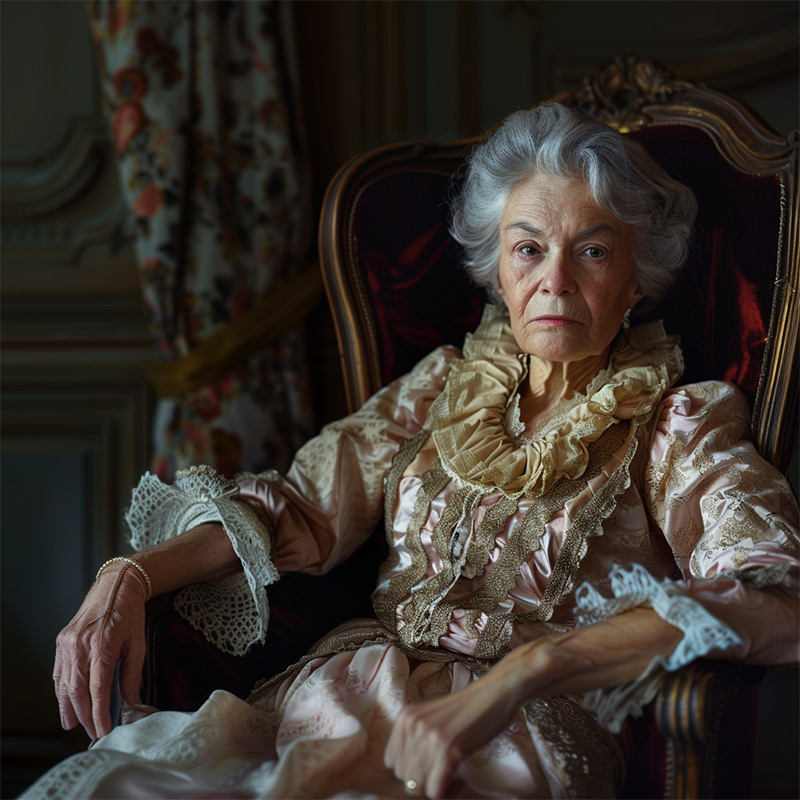
Martha Jefferson, wife of 3rd President Thomas Jefferson, significantly impacted his life. Though they endured personal tragedies, their marriage thrived on love and respect, and Martha's intelligence and charm complemented Jefferson's personality. While not directly involved in politics like some Founding Fathers' wives, Martha undeniably supported her husband's career.
As hostess of Monticello, Martha facilitated crucial political discussions among the Founding Fathers, which revealed just how much Martha influenced Jefferson's political views. Her encouragement likely shaped his perspectives on liberty, democracy, and governance.
John Adams

John Adams played a tremendous role as a founding father of the United States. The statesman, attorney, and diplomat was elected vice president twice and became the second president of the United States starting in 1797. During the American revolution, he assisted Thomas Jefferson in drafting the Declaration of Independence.
Despite all of his work during the American Revolution, his reputation was tarnished by some of his acts as president – a role he served only one term. Among his most controversial decisions was building up the Army and Navy in the Quasi-War with France, as well as the Alien and Sedition Acts, which sought to limit people from speaking out against the government.
One thing he did have going for him, that none of the other founding fathers can say: he never owned slaves.
Abigail Adams

Abigail Adams was the wife and closest advisor of John Adams. She is one of only two women to have been married to one president and mother of another—John Quincy Adams. Her life is one of the most documented of the first ladies due to the many letters she wrote to her husband during the Continental Congresses.
John frequently sought her advice on government matters, so when he is credited with his variety of achievements, Abigail played a big part in his success. She has consistently ranked among the three most highly regarded first ladies by historians. While we see her image in paintings and currency, this AI image does a better job of really nailing the details.
Benjamin Franklin
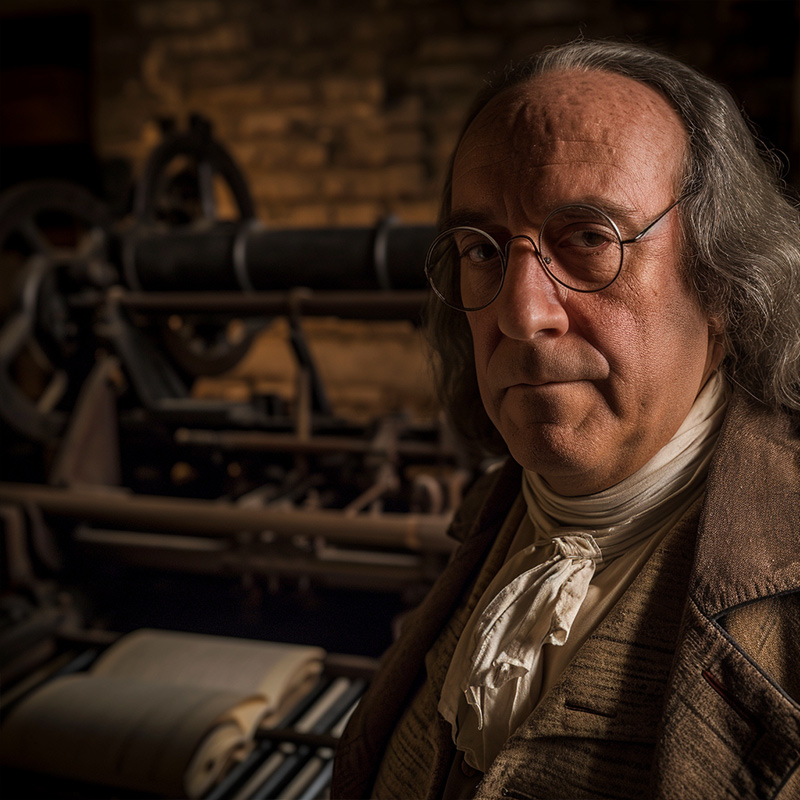
Benjamin Franklin is not only a founding father but probably one of the most significant American philosophers as well. He was also a writer, scientist, inventor and publisher. Although he was never a president, he served his country as a statesman and diplomat. He assisted in drafting and signing the Declaration of Independence and became the first United States Postmaster General.
You’ve seen his portrait, undoubtedly, many times in various forms - not only in paintings but on the $100 bill. His published autobiography is still read to this day, and many of his inventions, at least in some form, are used to this day. But this man is such a legend now that it is hard to imagine him as a real-life individual, but thanks to AI, we can get a better idea.
Deborah Read

Deborah Read — Benjamin Franklin's common law wife — wasn't your typical spouse. Their unconventional partnership began when a teenage Franklin lodged with Deborah's family. Years later, their paths crossed again after Read's first marriage dissolved, leading to a lifelong partnership in the early 1730s.
Despite her limited education, Deborah's intelligence shone and she frequently managed Franklin's business affairs when he explored science and politics. Unfortunately, Read refused to join him on his trips to Europe in the 1760s, where he stayed for 10 years. Within those years, she stopped writing to her husband, suffered a stroke, and died. Franklin never returned home before her death.
John Jay

John Jay may not be the most popular of the founding fathers, but he was certainly one of the most integral. He was a statesman, diplomat, and patriot. He was also an abolitionist, which separates him from most of the founding fathers. Nevertheless, he still owned a number of slaves.
John Jay was a leader in the Federalist party and played a significant role in the direction of the US foreign policy in the 1780s. John Jay was elected to the first continental congress and served as president for the second continental congress. Following the American Revolution, he served as Secretary of Foreign Affairs.
Sarah Livingston Jay
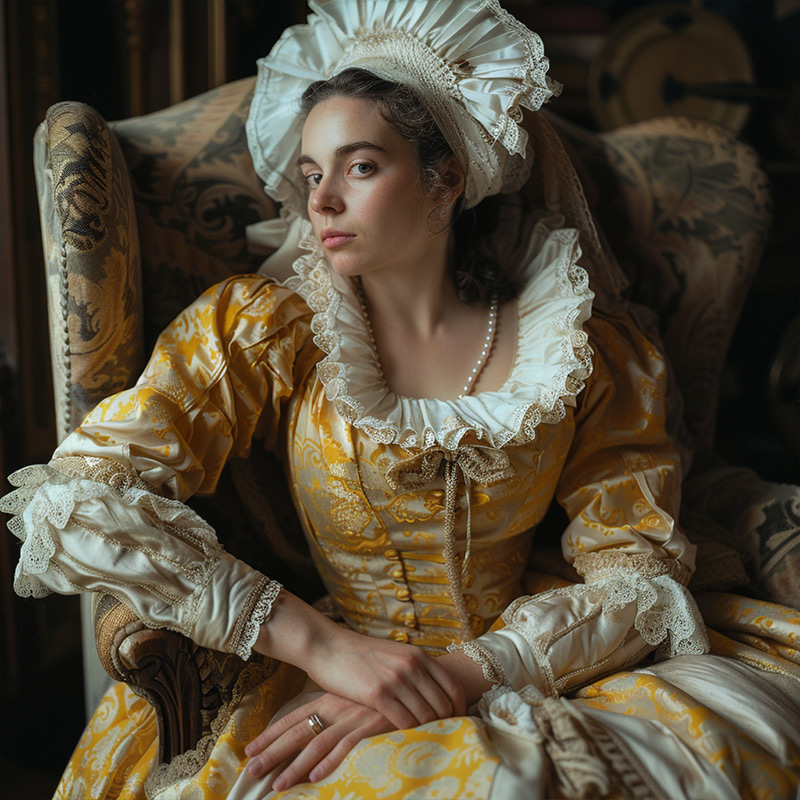
John Jay's wife Sarah Livingston Jay was born into a prominent New Jersey family in 1756. Sarah was well-educated and shared John Jay's passion for politics and public service, which she demonstrated during the American Revolutionary War by managing his affairs while John Jay negotiated the Treaty of Paris in 1783.
Like Elizabeth Schuyler, Sarah Jay supported various charitable causes throughout her life, including the New York Orphan Asylum Society, which provided care and education for orphaned children in New York City. She also adored literature and poetry and took time to correspond with fellow Founding Fathers Thomas Jefferson and Benjamin Franklin about such topics.
James Madison
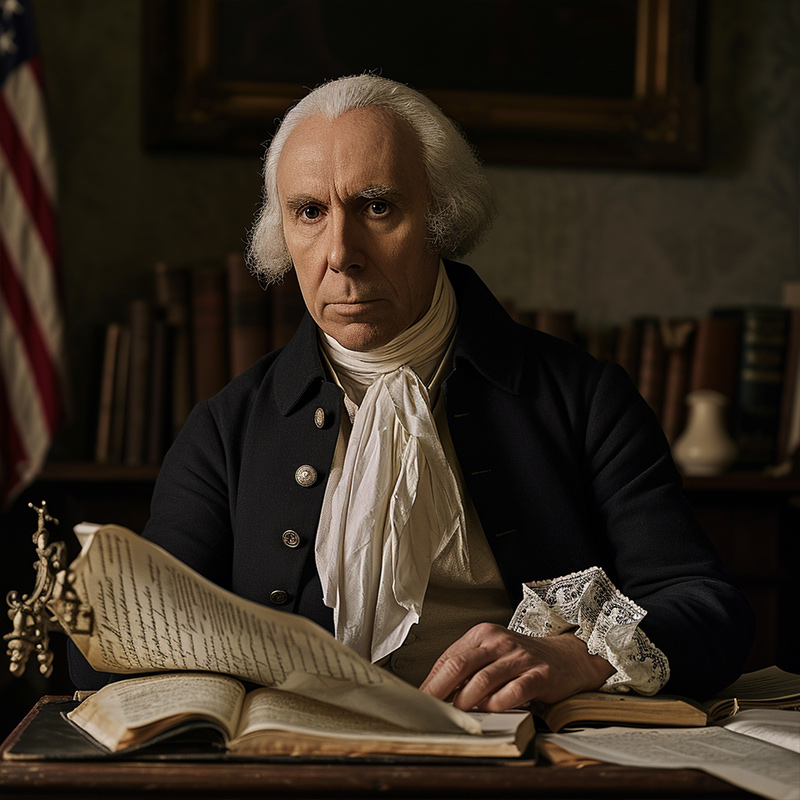
Statesman and diplomat James Madison has been labeled by posterity as the Father of the Constitution for his role in drafting and promoting the Constitution of the United States and its Bill of Rights. He had served on the Continental Congress during the Revolution and helped organize the Constitutional Convention.
James Madison would go on to become the fifth secretary of state and the fourth president of the United States. Generally considered to be a good president, there are not a whole lot of negatives in terms of his work as a public servant. There’s a fair share of portraits of the man, but here AI gives us a chance to imagine what he’d look like in real life.
Dolley Madison
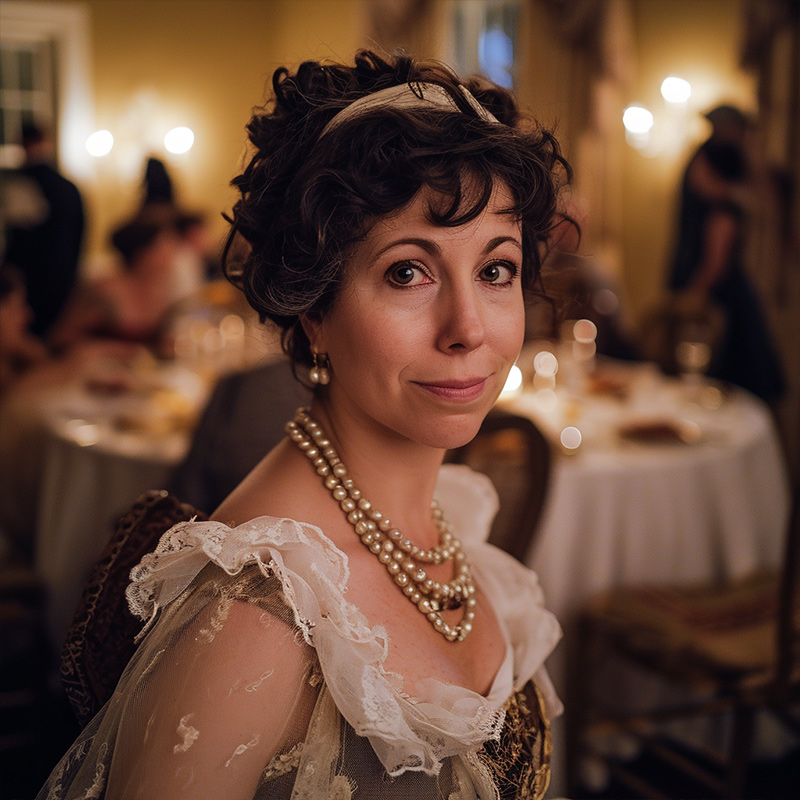
As the wife of James Madison, Dolley Madison was the fourth first lady of the US. She helped to create the idea that members of each party could socialize, network, and negotiate without violence by holding social functions to which she invited members of both political parties. Before, founders would meet with only one party at a time.
She also helped to furnish the brand-new White House. When it was set on fire, she saved the portrait of George Washington. She is highly regarded among first ladies, ranking among the top six. Her likeness can be seen in portraits, films, and coins, but AI takes it to the next level with this image.
Patrick Henry
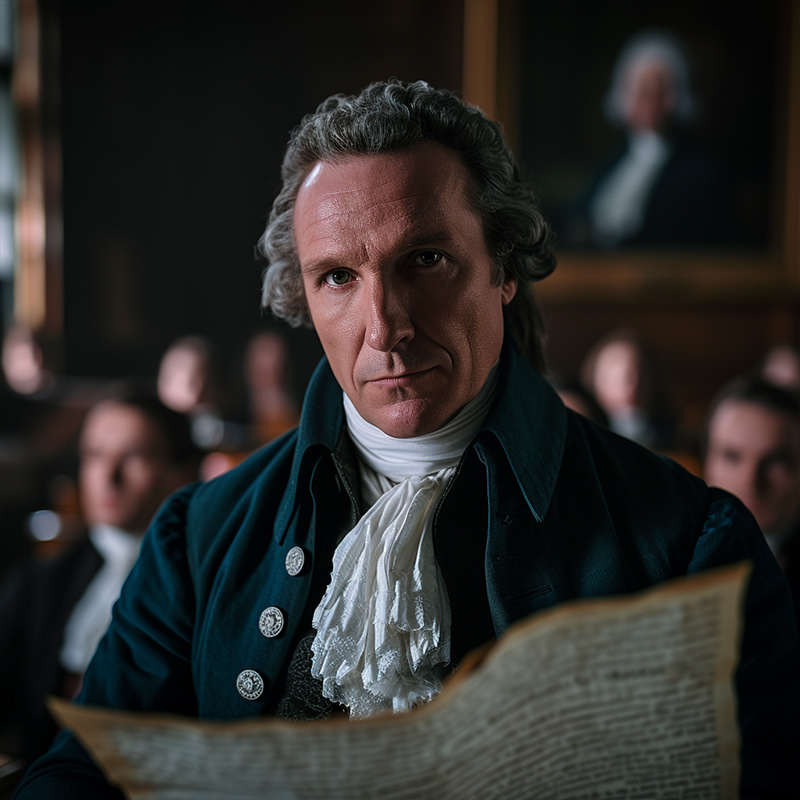
You’ve probably heard the phrase, “Give me liberty, or give me death!” but don’t know who said the famous words. Patrick Henry was an attorney, politician, and orator who served as the first and sixth governor of Virginia and spoke those courageous words long ago.
He served as a delegate to the First Continental Congress, where he signed the Petition to the King, later drafting the Virginia Declaration of Rights and the Virginia Constitution. As a slave owner, he hoped to see an end to slavery but had no plan after ending the import of slaves. This AI image gives us a glimpse of the enthusiastic orator.
Sarah Shelton Henry (Patrick Henry)
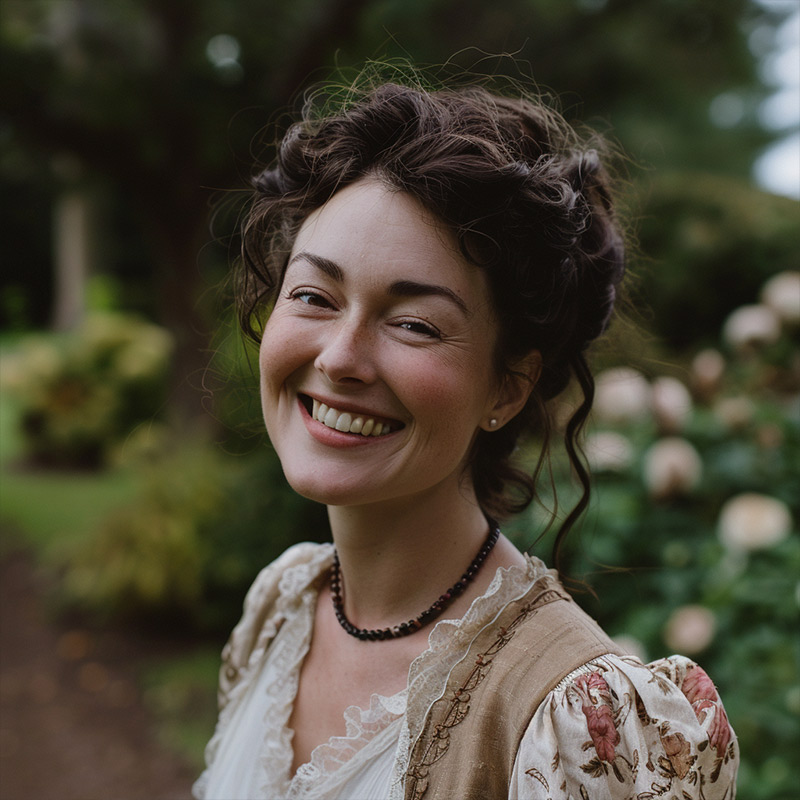
Sarah Shelton Henry, wife of Founding Father Patrick Henry, isn't someone we hear a lot about. They got married in 1754, and together they had a bunch of kids. Here's the thing — historical records tell us that Sarah struggled with mental illness, especially after giving birth to their sixth child. This likely meant she wasn't out there close with the other Founding Fathers' wives and wasn't directly involved in revolutionary activities.
But that doesn't mean she wasn't important! Imagine trying to raise a big family while dealing with an illness — that takes some serious strength. There are even rumors that Patrick kept Sarah a hidden because of her illness, but honestly, we just don't have enough info to know for sure.
Dorothea Dandridge Henry (Patrick Henry)

Dorothea Dandridge wasn't just some trophy wife for Patrick Henry. After his first wife passed away in 1775, he married Dorothea two years later. Dorothea was young, only 20 years old, but she became a stepmom to Patrick's whole crew of kids, some practically grown themselves! Being First Lady of Virginia during two of Patrick's terms as governor wasn't exactly a walk in the park. Imagine all those parties she planned!
But Dorothea wasn't just there to look pretty; historians believe she might have even been Patrick's secret weapon. She probably listened to his political ideas and gave him advice (kind of like a super early political consultant!). Even after Patrick passed away in 1799, Dorothea kept on rocking life. She remarried and lived a long life, dying in 1831.
John Marshall
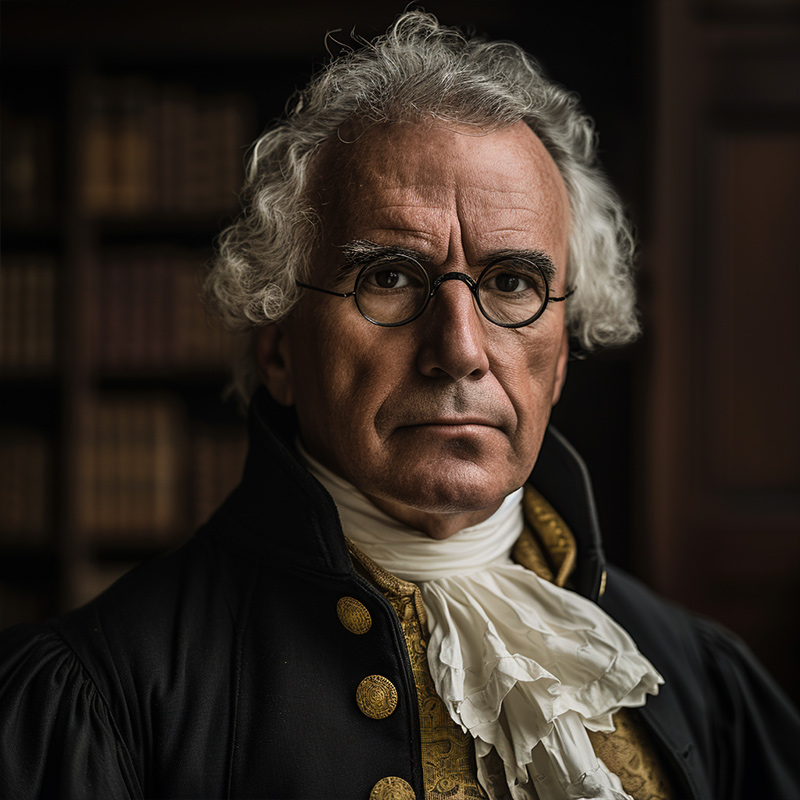
Known as one of the most influential justices to ever serve in the Supreme Court, John Marshall was a politician and lawyer, eventually serving as the fourth Secretary of State. He joined the Continental Army during the Revolutionary war, serving in multiple battles.
Marshall helped implement the principle of separation of powers which helped to create the three branches of government as independent and co-equal branches of government. Though he’s not as well-known as some of the others on this list, he played an extremely important role in the foundation of our nation.
Mary Willis Ambler Marshall
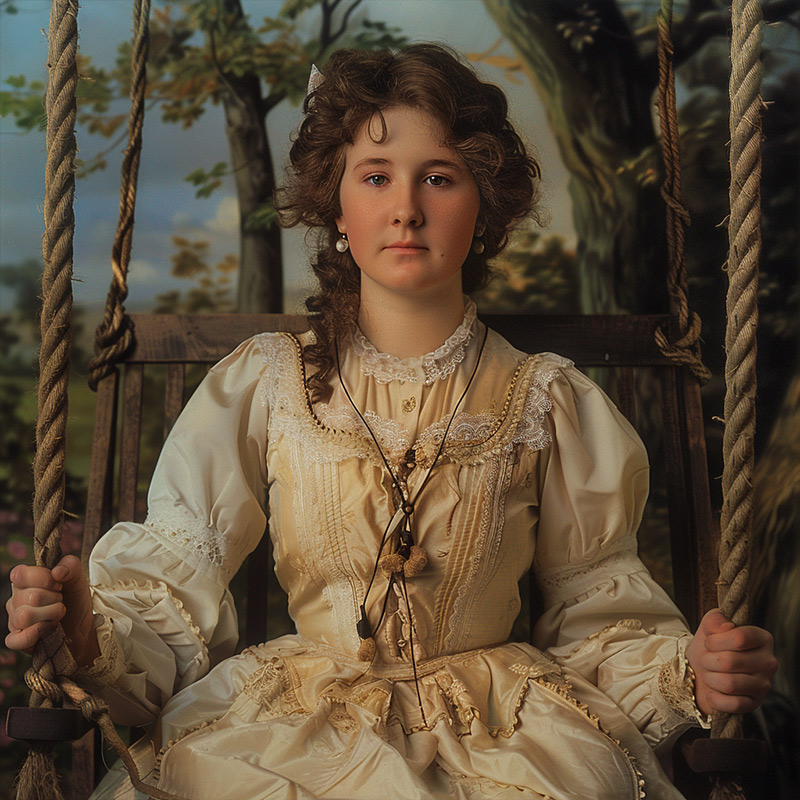
Mary Willis Ambler Marshall, AKA Polly, was the wife of Supreme Court Chief Justice John Marshall. While she wasn't out there signing the Declaration of Independence or giving speeches, she played a crucial role in his life. They got married in 1783, after the Revolutionary War, and had a bushel of kids. Polly wasn't directly involved in politics, but she definitely influenced John.
Their house became a popular hangout for important figures, including other Founding Fathers. Think of Polly as the ultimate hostess with the mostest, making sure everyone felt welcome and comfortable enough to chat about politics.
George Mason

George Mason was a politician and delegate to the U.S. Constitutional Convention of 1787 and was one of only three delegates who refused to sign the Constitution. His writings opposing ratification have had a significant influence on political thought. We feel like he is not as well known as he should be!
He added multiple clauses to the Constitution before deciding he couldn’t sign it. The reason? A lack of a bill of rights. He wanted to end the slave trade though he was a slaveowner himself. It was his fight for a bill of rights that led to their eventual creation.
Anne Eilbeck

There's limited information available regarding George Mason's wife Anne Eilbeck, but here's what we do know. Anne Eilbeck wasn't exactly out there wheeling and dealing with the other Founding Fathers' wives. She married George Mason, a big-shot Virginia planter dude, in 1750. They had a whole bunch of kids, nine of whom lived to see adulthood. Sadly, Anne passed away after a tough childbirth.
Anne seemed to focus on being an awesome wife and mom, keeping the household running smoothly so George could be out there dealing with political stuff. Her death hit George hard, and he even thought about quitting politics for a while because he had so much on his plate at home.
 Author
James Stephens
Last Updated: May 11, 2024
Author
James Stephens
Last Updated: May 11, 2024
